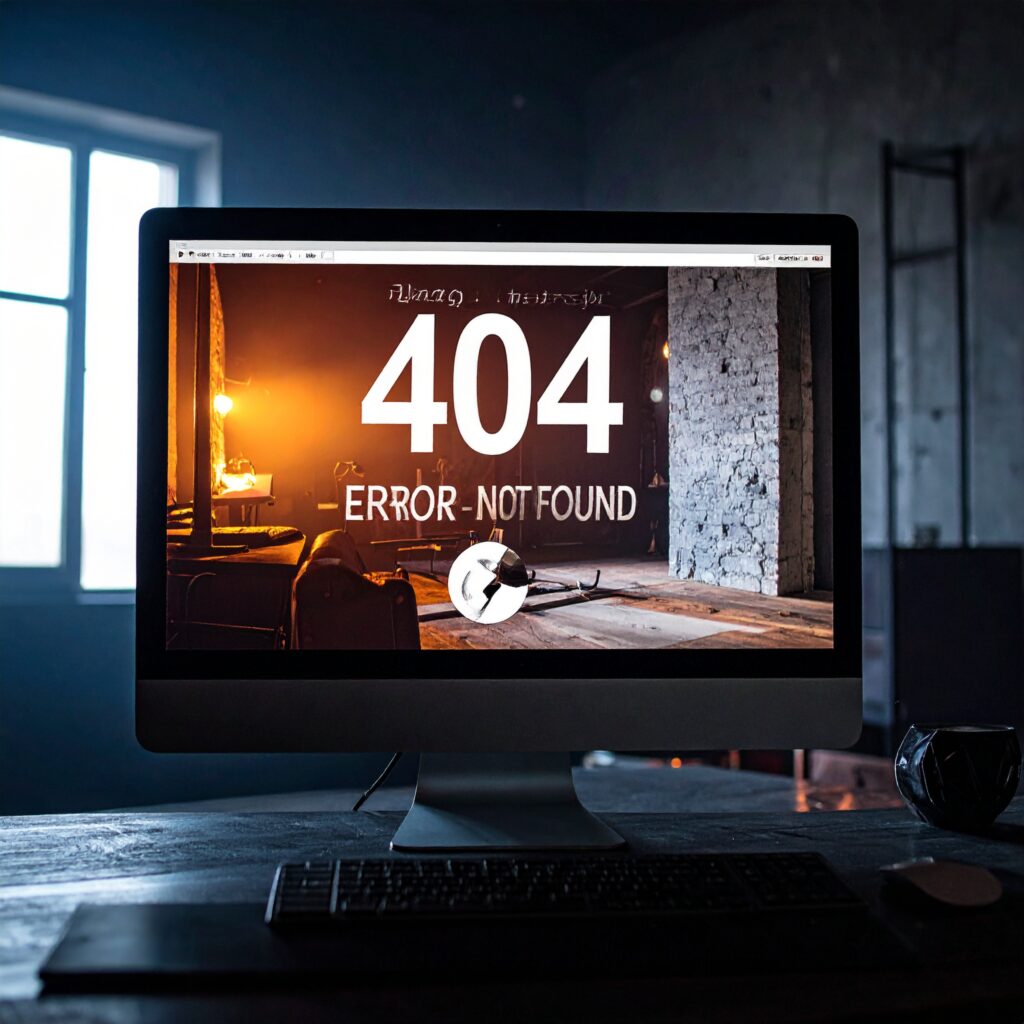The 500 error code, also known as the 500 Internal Server Error, is a common HTTP status code that signals a problem on the server side. When this error appears, it means the server encountered an unexpected condition preventing it from fulfilling your request. Unlike client-side errors, the 500 error code reflects issues within the website’s hosting environment or server configuration.
This error can disrupt your website’s accessibility and user experience, making it crucial to address promptly. Many website owners and visitors find it frustrating due to its generic nature and lack of detailed information.
In this article, you will learn how to fix the 500 error code in just three easy steps. These steps cover troubleshooting from basic user actions to more advanced technical solutions. Following this guide will help you restore your website’s smooth operation quickly and confidently.
Understanding the 500 Internal Server Error
The 500 Internal Server Error is a generic server-side error that indicates the server encountered an unexpected condition preventing it from fulfilling a request.
Unlike other 5XX errors like 502 Bad Gateway or 503 Service Unavailable which point to specific issues, the 500 error is a catch-all response for unspecified errors.
This error commonly arises during high traffic periods when servers are overloaded or after recent changes to website configurations, such as updates to plugins or themes.
Common Causes Behind the 500 Error Code
Here are some of the most common reasons why you might encounter a 500 error code:
1. Improper Server Configuration
One of the primary causes of the 500 error is misconfigured server settings that prevent the server from processing requests correctly.
2. Exhausted PHP Memory Limits
When PHP scripts consume more memory than allocated, it can lead to the server being unable to fulfill requests, resulting in a 500 error.
3. Syntax Errors in Configuration Files (.htaccess)
Errors in .htaccess files, commonly used to configure directory-level settings, can disrupt the server’s functioning and trigger the 500 error.
4. Corrupted Databases
Issues within databases, such as corrupted tables or data, can cause the server to encounter unexpected conditions and generate a 500 error response.
5. File/Folder Permission Issues
Incorrect permissions set for files or directories can restrict the server’s ability to access essential resources, leading to a 500 error.
6. Plugin or Theme Conflicts on CMS Platforms
Conflict between plugins or themes on content management systems like WordPress can introduce errors that result in a 500 status code.
7. Backend Connectivity Problems
Issues with backend servers, connectivity problems between servers, or proxy errors can also contribute to the occurrence of the 500 Internal Server Error.
Step 1: Basic User Troubleshooting for Visitors
Encountering a 500 error code can be frustrating, especially when you just want to access a website. Start with these straightforward steps that often resolve the issue from the user side:
- Reload the page: Sometimes, the error is temporary. Pressing the refresh button or hitting F5 can clear minor hiccups.
- Clear cache and cookies: Your browser stores files and data that might cause conflicts if outdated or corrupted. Clearing cache and cookies forces your browser to fetch fresh content from the server.
- Try a different device or network: Network-specific issues or device settings might interfere with loading the site properly. Accessing the website from another phone, computer, or switching from Wi-Fi to mobile data can help identify if the problem lies on your end.
These simple actions eliminate many client-side causes of the 500 error code before deeper troubleshooting is necessary on the server side. If these steps don’t fix it, chances are the problem is beyond your control and requires owner intervention.
Step 2: Website Owner’s Initial Checks and Fixes
When you encounter a 500 Internal Server Error on your website, start by accessing the server error logs. These logs provide detailed error messages that pinpoint the exact cause of the issue. Most hosting control panels or server environments offer access to these logs under sections like “Error Logs” or “Logs.” Look for recent entries that coincide with the time the error appeared.
Next, verify file permissions across your website files and folders. Incorrect permissions often trigger server errors due to restricted access. Reset file permissions to:
- 644 for files (readable and writable by owner, readable by group and others)
- 755 for directories (readable, writable, and executable by owner; readable and executable by group and others)
You can adjust these settings using FTP clients like FileZilla or through your hosting control panel’s file manager.
Syntax errors in the .htaccess file are common culprits behind 500 errors. This hidden configuration file controls how your web server handles requests but is sensitive to even minor mistakes like missing characters or incorrect directives. To fix htaccess errors:
- Temporarily rename the existing .htaccess file to something like
.htaccess_backup - Reload your website to check if the error disappears
- If fixed, regenerate a new .htaccess by saving permalink settings again in CMS platforms such as WordPress
Sometimes script compatibility issues arise when using certain PHP versions. Try switching PHP versions from your hosting dashboard—downgrading or upgrading may resolve conflicts with plugins or custom code causing the server error.
These initial checks cover frequent sources of 500 errors and often restore site functionality quickly without advanced intervention.
Step 3: Advanced Troubleshooting and Resolution Techniques
Disable Plugins/Themes
Disabling problematic plugins or themes, especially on WordPress sites, can help identify if any of these are causing conflicts leading to the 500 error. This step involves deactivating plugins one by one to pinpoint the specific one causing the issue.
Increase PHP Memory Limit
Increasing PHP memory limits is crucial if the current limit is exhausted, as this can lead to unexpected errors like the 500 status code. By modifying the PHP configuration settings, you can allocate more memory to your scripts to handle complex operations.
Repair Database
Repairing or restoring corrupted databases is essential for websites relying on databases for functionality. A corrupted database can trigger errors like the 500 Internal Server Error. Backing up your data regularly and performing database maintenance tasks can help prevent such issues.
Collaborate with Backend Teams
Reviewing backend server logs and collaborating with backend teams is necessary to identify any proxy or connectivity issues that might be causing the error. Sometimes, the root cause of the 500 error lies in communication breakdowns between servers or misconfigurations in the backend setup.
When to Seek External Help for Persistent 500 Errors?
Some 500 error code issues resist even the most thorough troubleshooting efforts. Recognizing when to call in professional assistance saves time and prevents further complications.
Signs you need external help:
- The error persists despite checking server logs, correcting permissions, and disabling plugins/themes.
- Attempts to increase PHP memory limits or restore configuration files fail.
- Database repair tools cannot resolve corruption.
- Backend error messages remain vague or inaccessible.
Restoring from backups is a critical step if recent site versions are stable. This can quickly reverse problematic changes causing the error. Ensure backups are complete and functional before proceeding.
Contacting hosting support contact teams or specialized technical experts provides access to deeper diagnostics. Hosting providers can analyze server-level configurations, hardware issues, or network problems beyond your control. They often have tools to trace requests through proxy chains or backend servers that cause hidden 500 errors.
Engaging professionals helps pinpoint root causes faster and ensures proper resolution without risking site integrity or data loss.
Conclusion
Troubleshooting can be a complex process, but by following a methodical approach, you can effectively identify and resolve issues with your WordPress site. Remember to start with simple user fixes and gradually move on to advanced backend checks if necessary.
It’s important to take action based on your level of expertise and the urgency of the issue. If you’re comfortable doing so, try out the suggested solutions yourself. However, if the problem persists or you’re unsure about making changes, don’t hesitate to seek professional assistance.
By being proactive and addressing issues promptly, you can ensure that your WordPress site remains functional and provides a positive experience for your visitors.




